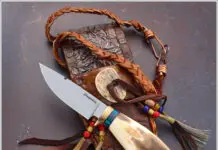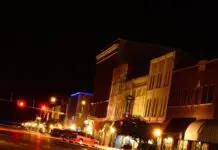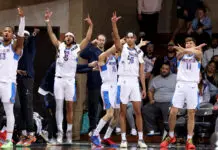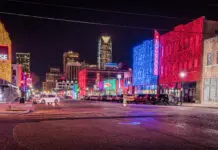With ever-changing technology and modernism closing in all around, author Alan Furst continues to cling to the past. He lives in the historic Hamptons in a house built in 1890; he writes historical novels set during the rise of Hitler; and he scribes his works on an IBM Selectric typewriter.
“I think the typewriter is a far superior tool for writing novels than any word program offered on the computer,” says America’s preeminent historical espionage novelist.
“On a typewriter, you hit a ‘D,’ you hear a loud clack and then there’s a ‘D.’ It’s wonderful! Why shouldn’t I work on something that pleases me emotionally?”
Furst is the author of 15 novels, including Night Soldiers, Dark Star, The Polish Officer, The World at Night, Red Gold, Kingdom of Shadows, Blood of Victory, Dark Voyage, The Foreign Correspondent, The Spies of Warsaw and his latest thriller, Spies of the Balkans, a stunning novel about a man who risks everything to right – in many small ways – the world’s evil.
This native New Yorker of Jewish descent is entranced with the dark places in Eastern Europe between 1933 and 1942, when the Nazi power was on the rise.
“Frankly, this period is endless,” he says. “No one will ever tell the stories or even know all the stories from that period, because it was such an immense kind of thing.”
Though Furst has been a household name in Britain for more than 20 years, it wasn’t until this past decade that he finally got the recognition he deserved in the United States, starting with his 10th novel, Kingdom of Shadows.
“My paperbacks had to be imported to the U.S. from the U.K. in the 1990s. Then all of a sudden in 2000, Kingdom of Shadows was my breakthrough here. It was my I-don’t-care-about-anybody-else-but-myself book. I was going to put anything I wanted to in this book and however I wanted to put it,” says Furst. “I had just about given up on ever being on The New York Times Best Sellers List and then all of a sudden the stroke of lightning came with this book.”
The novel made The New York Times Best Sellers List, as have all five that followed it.
Older generations aren’t the only ones intrigued with this 70-year-old’s masterful pieces; his works are starting to find their way onto college campuses.
“I was very surprised when my publisher told me last month that the trade paperback of Spies of the Balkans was showing up on best-seller lists coming out of college bookstores,” Furst says. “It is enlightening that young people want to read about this bygone era.”
Oklahomans will get the chance to meet this internationally acclaimed author when he comes to Tulsa Dec. 2 and 3 to receive the Tulsa Library Trust’s prestigious Peggy V. Helmerich Distinguished Author Award. He will receive the award at a black-tie dinner on Dec. 2 and give a free public presentation on Dec. 3 at 10:30 a.m. at Central Library.
“I’m elated to receive this recognition and am looking forward to visiting Tulsa,” says Furst. “I was greatly impressed by the authors who have received this award prior to me.”
Past winners of the Helmerich Award include Ian McEwan, John Grisham, Neil Simon, David McCullough, Ray Bradbury, Eudora Welty, John le Carré, Saul Bellow, John Updike and other internationally acclaimed authors. The award consists of a $40,000 cash prize and an engraved crystal book.
For more information about the Peggy V. Helmerich Distinguished Author Award, visit www.helmerichaward.org or call Larry Bartley, Tulsa Library Trust director, 918.549.7363.























